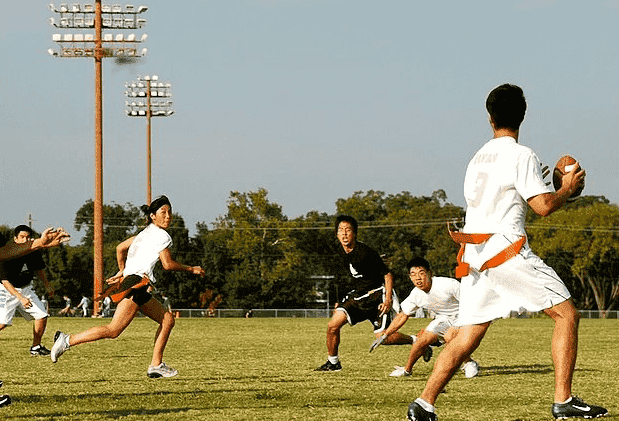
How to Play Flag Football
Written By: Gridiron Elite Training

How to Play Flag Football
Written By: Gridiron Elite Training
Flag football is a fantastic alternative to traditional tackle football, offering a safer, non-contact version of the game that can be enjoyed by people of all ages and skill levels. If you’re new to the sport and want to learn flag football how to play, you’ve come to the right place.
This guide on how to play flag football for beginners will provide you with all the information you need to start enjoying this exciting and accessible sport.
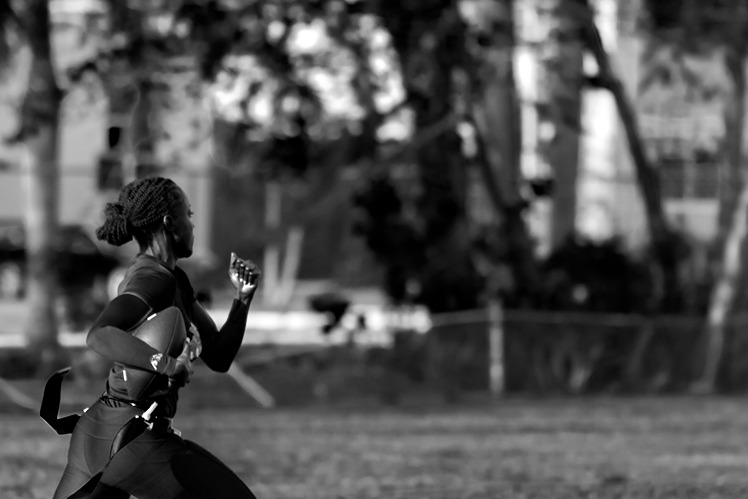
Understanding the Basics of Flag Football
Before diving into the rules and strategies of flag football, it’s essential to understand the fundamental differences between flag football and traditional tackle football. The most significant difference is that instead of tackling the ball carrier, defenders must remove a flag from the ball carrier’s waist to stop their progress. This non-contact approach makes flag football a safer option for players of all ages and abilities.
- Team Size – Flag football teams can vary in size, with popular formats including 5-on-5, 7-on-7, and 9-on-9. Each format has its own specific rules and strategies, but the basic principles remain the same.
- Field Dimensions – Flag football fields are typically smaller than traditional football fields, making the game more accessible for players with varying levels of athleticism. A standard flag football field measures 80 yards long (including two 10-yard end zones) and 40 yards wide.
- Flag Football Equipment – The essential equipment needed to play flag football includes a football, flags, and belt systems for each player. Players should also wear appropriate athletic attire and footwear, such as cleats or sneakers with good traction.
Flag Football Rules

Now that you understand the basics, let’s delve into the rules of flag football. While specific rules may vary depending on the league or organization you’re playing with, the following guidelines are standard in most flag football games:
- Starting the Game – Each game begins with a coin toss to determine which team will start on offense and which team will start on defense. The team that wins the coin toss has the option to choose to start with possession or to defer to the second half.
- Possession and Downs – The offensive team has four downs (attempts) to reach the next zone line, which is usually marked every 20 yards. If the offense fails to reach the zone line within four downs, possession of the ball is turned over to the opposing team.
- Scoring – In flag football, there are several ways to score points:
- Touchdown: Crossing the opponent’s goal line with possession of the ball, worth 6 points.
- Extra Points: After scoring a touchdown, the offense has the option to attempt a 1-point conversion from the 5-yard line or a 2-point conversion from the 10-yard line. The team must complete a pass or run into the end zone to earn the extra points.
- Safety: When the defensive team forces the offense to commit a turnover or fumble in their own end zone, worth 2 points.
- No Contact – In flag football, there is no tackling, blocking, or another physical contact between players. Players must rely on their speed, agility, and skill to evade defenders and advance the ball down the field.
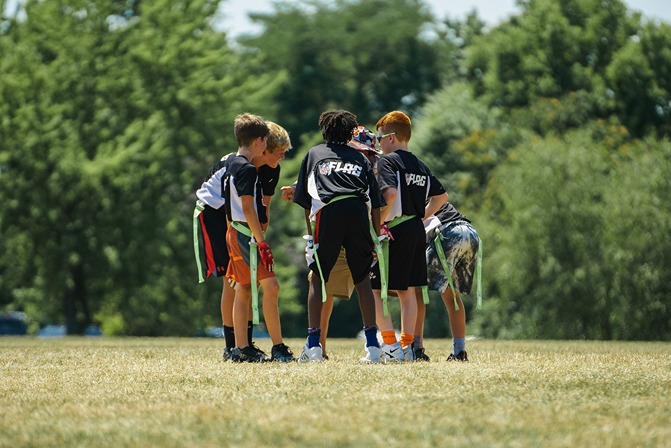
How to Play Flag Football: Offensive Strategies
When learning how to play flag football, it’s essential to understand the offensive strategies that will help your team move the ball down the field and score points. Here are some fundamental offensive strategies to keep in mind:
- Quarterback – The quarterback is responsible for calling the plays and distributing the ball to their teammates, either by passing or handing it off to a running back. A good quarterback must have a strong and accurate arm, quick decision-making skills, and a solid understanding of the team’s playbook.
- Running Plays – In flag football, running plays can be an effective way to advance the ball and keep the defense guessing. Use a combination of handoffs, pitches, and direct snaps to the running back to create confusion and open up running lanes.
- Passing Plays – One of the most exciting aspects of flag football is the emphasis on passing. Develop a variety of short, intermediate, and long passing plays to keep the defense off balance. Utilize your wide receivers, tight ends, and running backs as targets to maximize your options on the field.
- Misdirection and Trick Plays – To outsmart the defense, incorporate misdirection and trick plays into your offensive strategy. These plays can include reverses, double passes, and flea flickers. While these plays can be high-risk, they can also lead to big gains and game-changing moments.
How to Play Flag Football: Defensive Strategies

In addition to mastering offensive strategies, learning how to play flag football effectively requires understanding the defensive side of the game. Here are some essential defensive strategies to consider:
- Flag Pulling – The primary objective of the defense is to remove the ball carrier’s flag, stopping their progress. To excel at flag pulling, defenders must practice their agility, reaction time, and hand-eye coordination.
- Defensive Coverages – Employ various defensive coverages, such as man-to-man and zone coverage, to disrupt the offense’s passing game. By varying your defensive schemes, you’ll make it more difficult for the quarterback to find open receivers.
- Pass Rush – In flag football, pressuring the quarterback is crucial for disrupting the passing game. Designate one or two defenders as pass rushers, and have them focus on getting to the quarterback as quickly as possible to force hurried throws or turnovers.
- Communication – A successful defense requires excellent communication among teammates. Make sure each player knows their assignment and communicates any changes or adjustments based on the offensive formation or movement.
How to Play Flag Football: Tips for Beginners
As you begin your flag football journey, keep these tips in mind to help you improve and enjoy the game:
- Practice, Practice, Practice – Like any sport, practice is essential for developing your skills and understanding of the game. Spend time working on your passing, catching, flag pulling, and footwork to become a more complete player.
- Stay Active on Both Sides of the Ball – While you may prefer playing offense or defense, it’s essential to contribute on both sides of the ball. Being a well-rounded player makes you more valuable to your team and allows you to adapt to various in-game situations.
- Learn from Others – Watch other players, games, or instructional videos to gain insight into different strategies and techniques. Learning from others can help you develop your skills and become a more knowledgeable and effective player.
- Have Fun – Most importantly, remember to have fun and enjoy the camaraderie of playing with your teammates. Flag football is a fantastic way to stay active, socialize, and enjoy the thrill of competition in a safe and inclusive environment.
Concluding How To Play Flag Football For Beginners
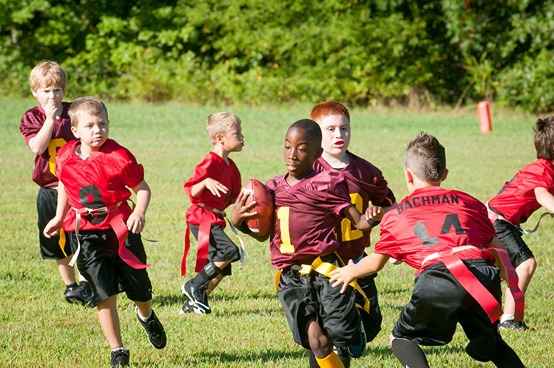
With this ultimate guide on how to play flag football for beginners, you now have the knowledge and tools to start enjoying this exciting and accessible sport.
Remember to practice, stay active on both sides of the ball, learn from others, and most importantly, have fun. As you gain experience and develop your skills, you’ll discover the joy and satisfaction that comes from mastering the game of flag football.
Subscribe To Get Updates On Newly Released Articles
Don't forget to share this post!
Continue Reading More Football Recruiting Tips Below
Related Articles

5 Keys to the College Football Recruiting Process
If you are a high school football player, it’s easy to get lost in the college football recruiting process. This article will break down key stages of the recruiting process.
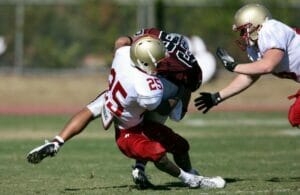
Junior College Football Recruiting
If you’re thinking about playing college football, read this article for quick tips on the process of juco college football recruiting.

Complete Guide to Football Recruiting Rankings
Find out why football recruiting rankings are important, where they come from, what they mean and how they affect your recruiting strategy.

Gridiron Elite Training was started to help educate and provide football players with a community to receive proper training and guidance.
We created “The Gridiron Elite Academy” which is an online football performance network that provides football players of all levels with sports performance workout programs, football position-specific drills, mindset coaching, mental toughness training, recruiting guidance and help, and nutrition programs.


